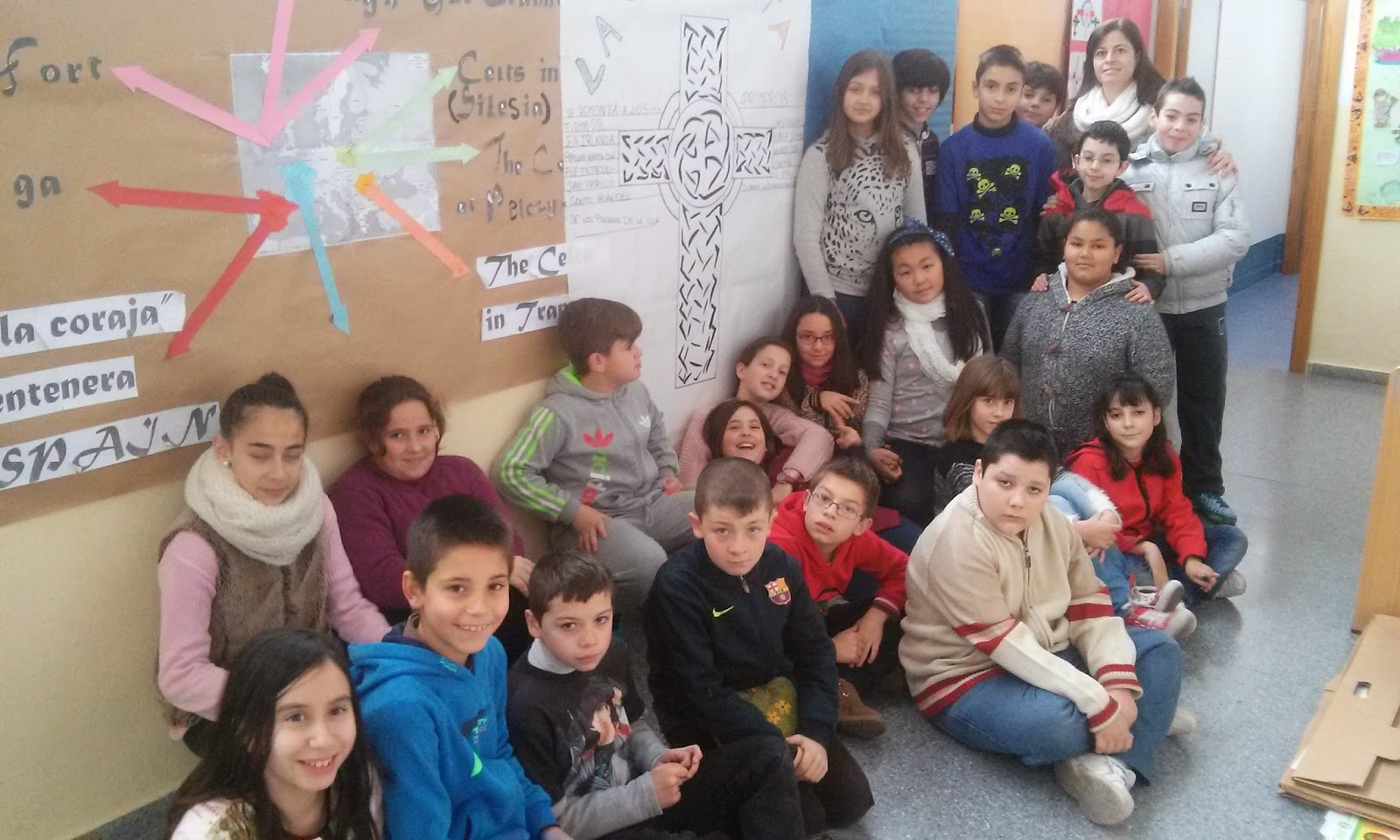Friday 30 January 2015
Thursday 29 January 2015
Monday 26 January 2015
The Celtic Cross
THE CELTIC CROSS
The Celtic cross is a religious icon that combines a Christian cross and many of them have a circle surrounding the intersection.
It goes back to the early days of Christianity in Ireland.
A popular legend in Ireland says that the Celtic cross was introduced by Saint Patrick or other Irish saint for the evagelization of the pagans of the island. It also says that St. Patrick joined circular sun or moon Christian symbol representation, thus linking the meaning of the cross pagan spirituality to better convey your message.
Saturday 24 January 2015
Monday 12 January 2015
Thursday 8 January 2015
Viajando por Europa.
VISITA A BUDAPEST (HUNGRIA).
Durante estas navidades he podido visitar la preciosa ciudad de Budapest, capital de Hungria. Este país
hace frontera con varios países, entre los que se encuentra Rumania, uno de los
socios de este proyecto.
Esta bella ciudad es el resultado de la unión de tres ciudades, Óbuda (la
antigua Buda), Buda, la ciudad en el margen izquierdo del Danubio y Pest, la ciudad baja en la orilla derecha. Su historia
conjunta es relativamente reciente, se unificaron en 1873 y hoy es, además de
la capital de Hungría, su centro industrial, comercial y de transportes.
Lo más interesante es que Óbuda fue un asentamiento de tribus celtas y
según los vestigios arqueológicos con cierta importancia. Más tarde, al
comienzo de la era cristiana, fue ocupada por los romanos quienes mantuvieron
su nombre celta, Aquincum. Con el tiempo se convirtió en la capital de la
provincia romana Panonia Inferior, con gran importancia estratégica
por ser el Danubio la frontera del Imperio.
Buda y Pest nacen como asentamientos romanos hacia el año 14 antes de
Cristo sobre los anteriores poblados celtas. Los romanos se retiran en
el siglo 5 y les suceden los hunos, lombardos y eslavos hasta la llegada de los
magiares en el año 896.Para entonces Buda y Pest eran
dos ciudades fortaleza una a cada lado del río. En el siglo 12, tras las guerras
búlgaro-húngaras, las dos ciudades comenzaron un
fuerte desarrollo gracias a los emigrantes franceses
y alemanes. Ambas fueron devastadas por el Imperio mongol y reconstruidas por
colonos alemanes separándose sus destinos.
En 1361 Buda se convierte en la capital del país, hasta 1541 en que pasa
a ser capital turca. En 1526 a manos de los turcos,
Pest había quedado deshabitada. Tras los turcos la región pasó a manos austríacas bajo cuyo
dominio se creó el primer puente permanente sobre el Danubio uniendo ambas
ciudades, el Puente de las Cadenas, en 1849. Solo 24 años después las ciudades en
las dos orillas del río quedarían unidas en una sola ciudad, Budapest que
llegaría a ser la segunda más importante del Imperio Austrohúngaro.
Si tuviera que destacar un monumento me quedaría con la plaza de los
Héroes (patrimonio de la humanidad) dedicado a las 7 tribus magiares fundadoras
de Hungria en el s.IX. Estas tribus provenían de los Montes Urales y
sus jefes fueron: Árpad,Előd, Tas, Huba, Töhötöm, Kond y Ond.
Esther Nieto. CEIP Ntra. Sra. de La Antigua. Mérida.
Thursday 1 January 2015
Our common Celtic Settlement
First, I wish you a wonderful Year and secondly, here you are our own Celtic Settlement
We could design and draw a Celtic population and add features from every countries. We can decide what customs are in the town, if it is coastal or inland, the weather, the food... We can put it a "Celtic name and describe the relations with neighboring tribes.
It could be the script
1.- customs
2.- coastal or insland
3.- weather
4.- the food
5.- the name
6.- relationships witha neighboring tribes.
And every one could choose what want to do with their students. Only a few sentences in every theme and when it is finished we will draw our common Celtic Settlement.
We could design and draw a Celtic population and add features from every countries. We can decide what customs are in the town, if it is coastal or inland, the weather, the food... We can put it a "Celtic name and describe the relations with neighboring tribes.
It could be the script
1.- customs
2.- coastal or insland
3.- weather
4.- the food
5.- the name
6.- relationships witha neighboring tribes.
And every one could choose what want to do with their students. Only a few sentences in every theme and when it is finished we will draw our common Celtic Settlement.
Subscribe to:
Posts (Atom)








